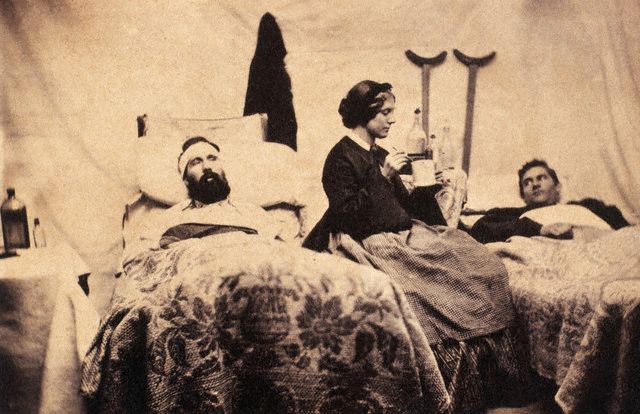
Before the Civil War, women in society were not able to pursue a profession in nursing. This field was rather entirely dominated by men—many of whom, despite lacking the necessary training and knowledge themselves, had an edge due to the prevailing gender norms that excluded women. Leading up to the Civil War, nursing was considered both an intellectually and physically demanding career position, one not suitable for women. Furthermore, much of societal norms rather emphasized that women weren't capable of the tedious work that nurses had to endure, setting the social stereotype for limitations of women and what they could pursue. However, that would soon change, as the United States was not prepared for bloodshed and mass casualties that would result from the Civil War, forcing the nation to reconsider and address the need to fill urgent positions for nurses.
As the Civil War progressed, the increasingly growing number of wounded soldiers outpaced the male stewards available to offer medical services, including performing surgeries, amputations, and providing physical and emotional support to wounded soldiers. Combined with the lack of nurses, matched with adequate medical attention given to soldiers further led to increased casualties, as the chances of recovery for wounded soldiers were significantly reduced. In response, the Union Army in desperate need began to accept help from female volunteers, and thousands of women leaped towards this opportunity demonstrating their willingness and dedication to prove how women were suitable for nursing patients, as well as capable enough to pursue a profession as a nurse. Marking a change in perception of societal norms, and eliminating the limitations set by society on women.